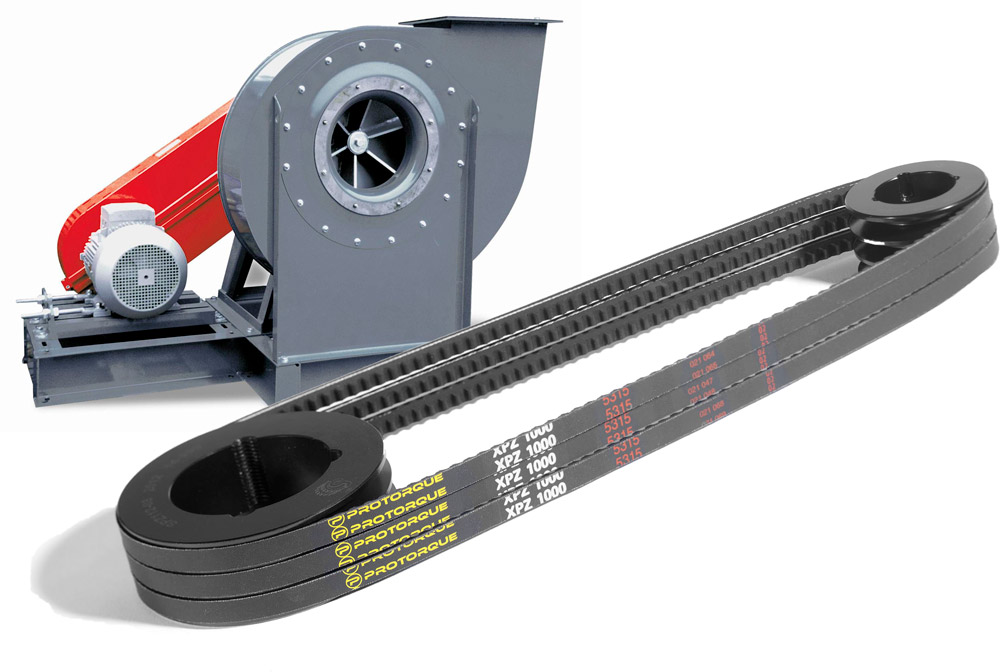Choosing The Right V-Belt Drive For Your HVAC Fan Application

Fans are one of the most commonly found devices in the HVAC (heating, ventilation and air conditioning) industry, tasked with maintaining a continuous flow of air through the use of rotor and impellor blades. They can be used to cool, heat or ventilate, and are driven by an electric motor which can be directly connected to the fan using a coupling, or can be belt-driven.
The choice of v-belt drive used in a belt-driven HVAC fan application can have a dramatic impact on both the performance and lifespan of the fan-motor assembly. A properly selected v-belt can lead to lower maintenance costs, a reduction in unplanned downtime and increased application efficiency, with minimal increase in initial outlay.
When specifying v-belts for HVAC fan applications, the pitch diameter of the pulleys will be required, as well as the pulley centre distance, in order to calculate the pitch length of belt required. The power and speed of the drive will also need to be taken into consideration, to ensure that the v-belt drive chosen fits the application requirements.
It may be tempting to select a synchronous belt over a v-belt, for their high efficiency levels. However, synchronous belts are often extremely noisy and cause large amounts of vibration, which could be damaging to the application, as well as being disruptive in environments such as offices or hospitals. They also require precise alignment, which leaves room for error.
When installed, tensioned and maintained correctly, the efficiency of v-belts can be increased dramatically. V-belts have a much lower cost in comparison to synchronous belts for both initial purchase and replacement, so will often work out as a similar price, or even slightly cheaper than synchronous belts, despite the slightly reduced efficiency.
If the cost of a raw edge cogged v-belt and a classical wrapped v-belt is within 10%, it will usually provide better value to select the raw edge cogged v-belt for HVAC fan applications, as the cogs enable the belt to wrap more closely around the arc of the pulley, reducing bending resistance, and providing a greater coefficient of friction.
The maximum belt speed should not exceed 6500 fpm. Belt speeds above this level may cause vibration, excessive noise, poor bearing life and high levels of fatigue stresses, which could lead to both belt drive and application damage. There are many online calculators available to calculate the maximum rpm of a drive, by inputting “6500 fpm” along with the pitch diameter of the pulley.
Protorque raw edge cogged v-belts are often a cost-effective solution to HVAC fan applications. Their cogged profile allows for increased belt flexibility and long lasting performance. They are also able to run effectively on smaller diameter pulleys, making them perfect for applications of all sizes.
Choosing the right v-belt for your heating, ventilation or air conditioning system will enable your application to reach maximum efficiency, minimise unplanned downtime and reduce maintenance costs. If you need help in discovering the optimum solution for your application, why not talk to our experts. With many years' experience in specifying power transmission products, they can offer you tailored advice, and even provide you with on-site visits to make sure that you find your perfect solution.
